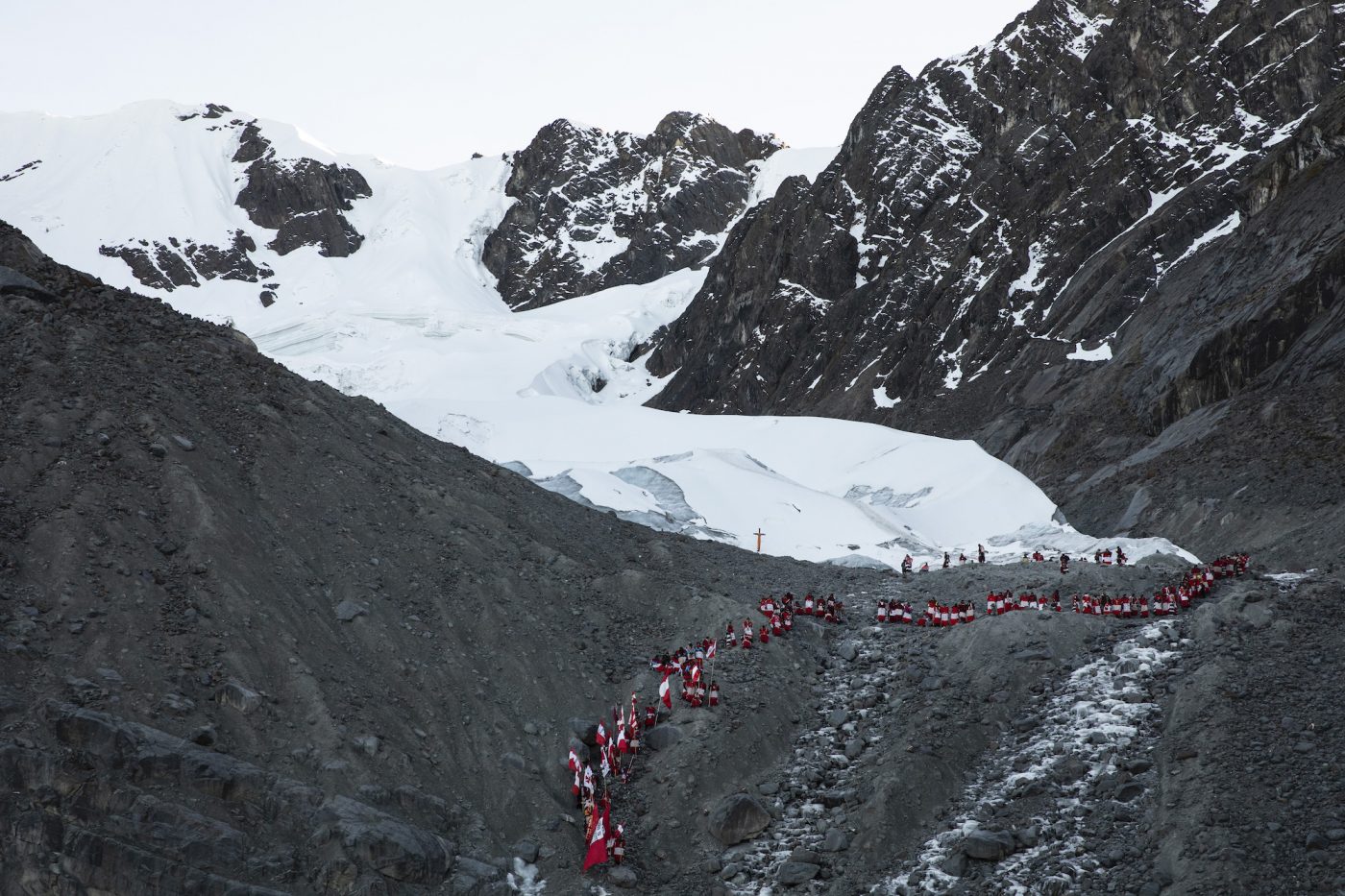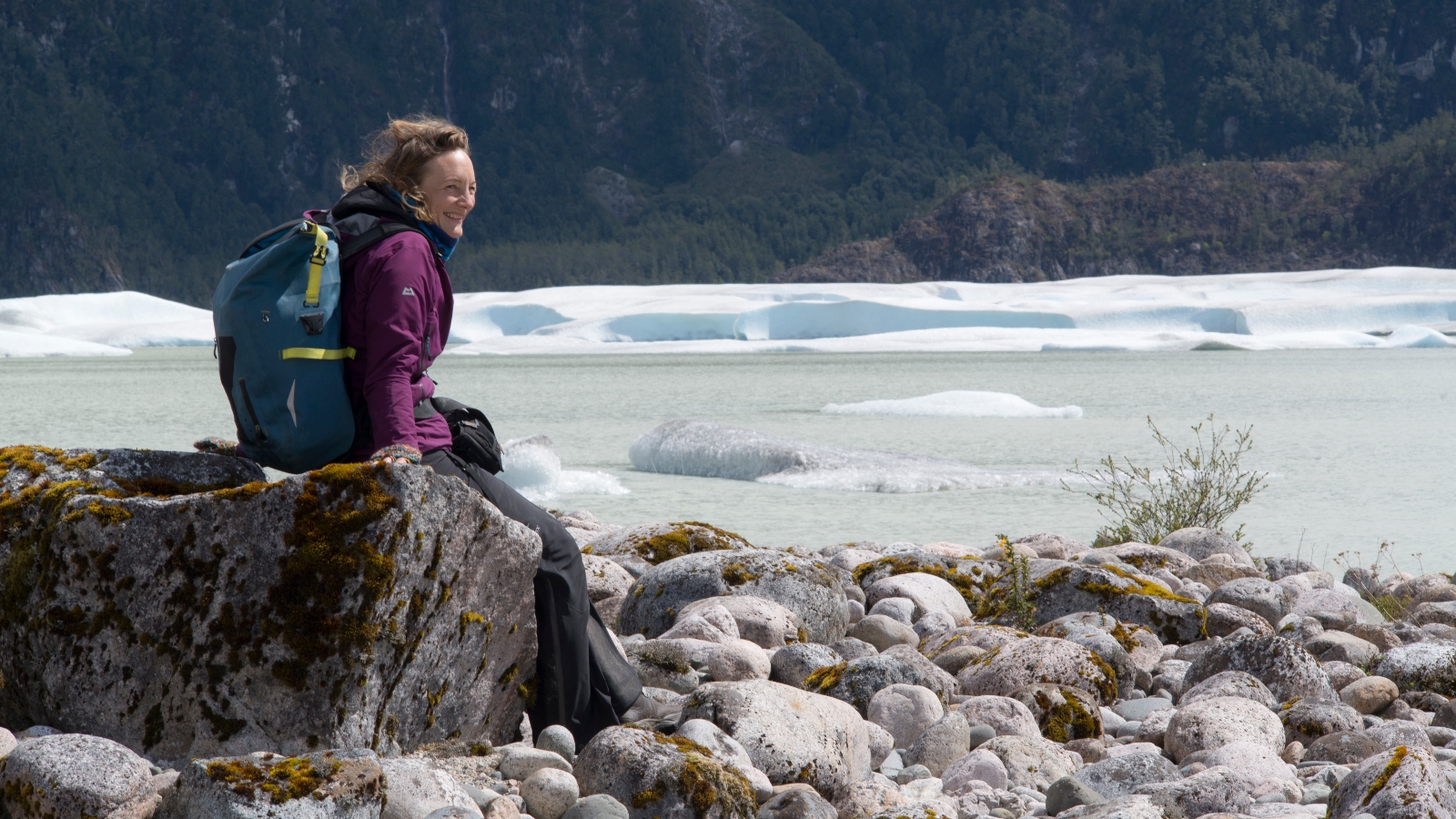You probably know the headlines well. A “doomsday glacier” in Antarctica is “melting faster” than predicted; the Greenland ice sheet is on the “brink of a major tipping point.” But what about the lives of the scientists behind the research? The ones who spend grueling months living on glaciers in sub-zero temperatures, eating frozen cans of beans and collecting tubes of ice melt to study?
Those stories are rarely told, partly because it’s not seen as professional for academics to make details about their personal lives public, according to Jemma Wadham, a glaciologist from the United Kingdom. The University of Bristol professor decided to break that unspoken rule in her first book, Ice Rivers: A Story of Glaciers, Wilderness, and Humanity.
“I really believe in true stories and it being OK to share how you are and what’s been going on for you, in addition to what you discovered,” she said. “There’s sort of a blending between all of those things, isn’t there? Glacier change itself is very personal because it will affect us personally.” Melting glaciers won’t just contribute to sea-level rise, although that’s a big deal too — they will alter the fabric of daily life for people across the world, who rely on these enormous stores of ice for drinking water and irrigation.
In the book, which comes out in the United States this week, Wadham recounts three decades of her research expeditions all around the world. She introduces readers to the often-covered glaciers of Greenland and Antarctica as well as glacial B-listers in Norway, India, and the South American Patagonia. She steps deftly between the roles of teacher — explaining the science behind how glaciers migrate, adapt, and support life — and friend, as she opens up about her personal struggles. Wadham shares the internal turmoil she felt going on expeditions while her mother was ill, her yearning to have a child and subsequent miscarriage, and what it’s like to be a woman in the male-dominated field of glaciology. (She chronicles more lighthearted trials too, like how to pee on a glacier and use a flimsy sock as a coffee filter.)
Wadham may have never written the book if she hadn’t been forced to step back from the scientific work she has poured her life into. At the end of 2018, she was rushed into emergency surgery for a benign brain cyst she had long ignored the warning signs for. During her recovery period, she spent six months sipping tea, walking her beloved dog Poppy, and reflecting. She decided to try her hand at creative writing to keep herself busy, and out came Ice Rivers, which she drafted in just seven weeks. “I didn’t actually intend at the start to be in the book myself,” she said. “But as I wrote more and more, I found it almost impossible to separate my own experiences from these places.”

Wadham intertwined her own story with the lives of glaciers not as a personal indulgence, but in the hopes that it will make people feel closer to these massive chunks of ice. She writes with vivid imagery (“the mountain sides were often lumpy, crumpled like used paper bags”) and details the cultural and societal significance of each glacier she visits. Around the world, including in Peru’s Andean communities, glaciers are a vital source of clean water. In Patagonia, glacier lakes can flood and devastate rural villages. And in the Indian Himalayas, glacial meltwater holds religious significance, feeding into the holy river Ganges.
The book is not the first to recognize the value of writing personal stories about glaciers, which can feel geographically and emotionally distant to people in places like the U.K. and U.S. Earlier this year, for instance, Andri Snær Magnason, the Icelandic poet famous for writing a dying glacier’s memorial, published On Time and Water. The book attempts to construct a less jargon-y vocabulary for the climate crisis to help people process the consequences of concepts such as ocean acidification and glacial melt.
Ice Rivers doesn’t just explain what glaciers are, it digs into who they are — the glaciers become characters of their own in Wadham’s straightforward, yet often poetic, words. “That first tantalizing smell of the ice, that sense of being stroked by its soft, frigid fingers, is a welcome and a warning,” she writes of what it’s like to arrive at a glacier.
Wadham complicates the common misconception that glaciers are lifeless chunks of ice — her own research discovered that microscopic life forms can survive within glaciers, as well as between the ground and the base of a glacier. “We could no longer think of glaciers as frozen, sterile wastelands — they were as much a part of Earth’s biosphere as the forests and the oceans,” she writes.
Charismatic animals, such as penguins and polar bears, necessarily make appearances in Ice Rivers, but Wadham isn’t afraid to push back on our preconceived notions about them either. After encountering a polar bear through the flimsy window of a cabin in Svalbard, Norway, she writes that “we often make out ice bears to be cute, fluffy creatures, perfect for greeting cards. I have to say that during the brief moment I stared into that bear’s eyes, I saw steely voids — simply the wildness of a top-level predator.” Perhaps it’s learned from her time weathering harsh environments or maybe it’s her scientific background, but Wadham does not sugarcoat her experiences. Polar bears are terrifying, scientific research is grueling (but rewarding), and glaciers are rapidly shrinking.
Wadham ends the book with an anecdote that is simultaneously chuckle-worthy and gut-wrenching — she is performing as a dying glacier in a play based on her research, an activity far outside of her comfort zone as a scientist. She paints her face white, dons a blue wig, and dances her heart out in front of a crowd of more than 150 people at the Hay Festival in Arequipa, Peru. Wadham describes it as a moment of catharsis — as she performed, she was not a scientist. She was a full human being, inextricably linked to our planet’s glaciers.




